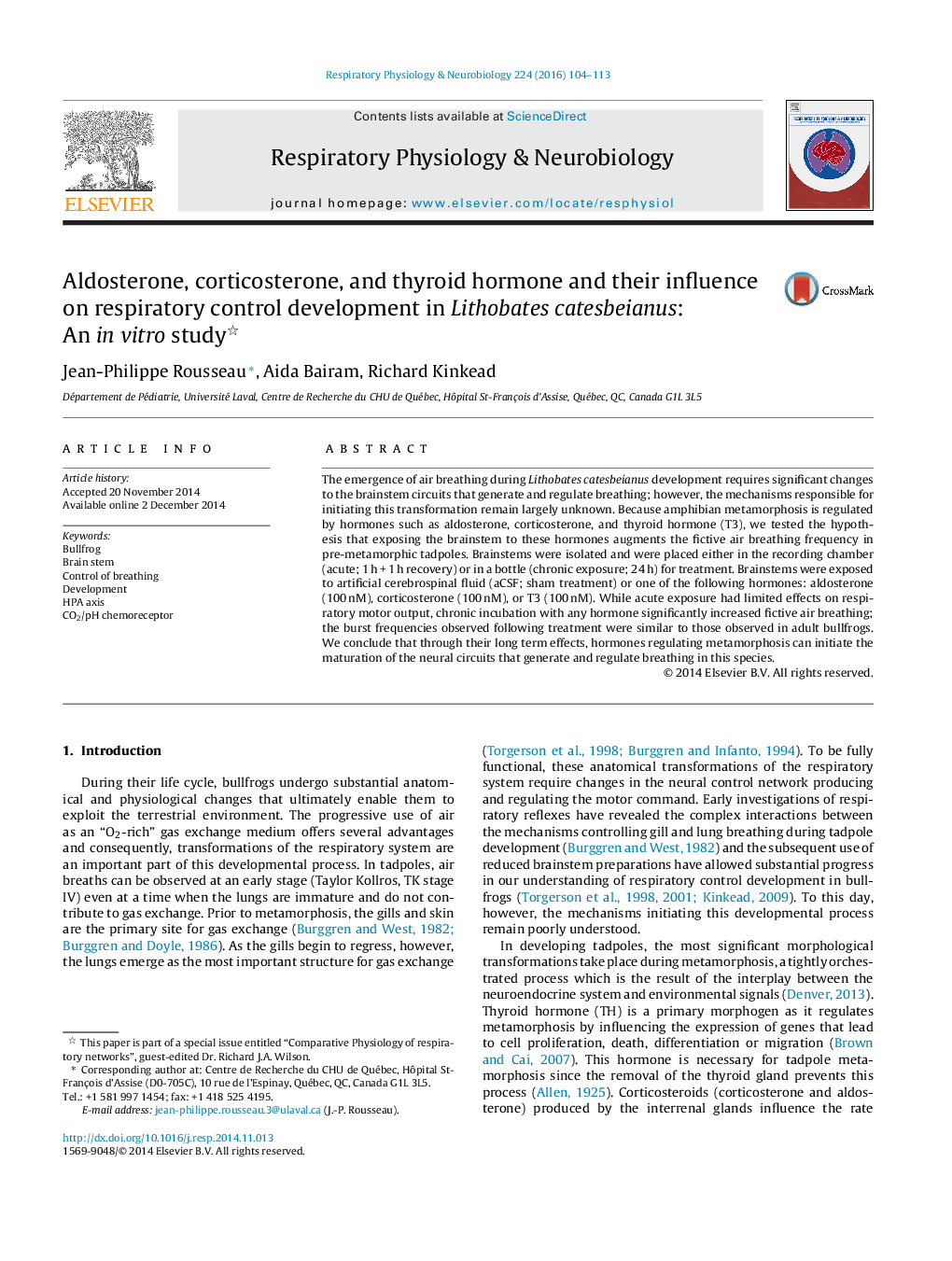| Article ID | Journal | Published Year | Pages | File Type |
|---|---|---|---|---|
| 2846776 | Respiratory Physiology & Neurobiology | 2016 | 10 Pages |
•We examined the effects of hormone exposure on respiratory control in bullfrogs.•Experiments were performed on in vitro brainstem preparations from tadpoles.•The effects of chronic hormone exposure were higher than acute hormone exposure.•Following exposure, bursting pattern of tadpoles was similar to adult frogs.
The emergence of air breathing during Lithobates catesbeianus development requires significant changes to the brainstem circuits that generate and regulate breathing; however, the mechanisms responsible for initiating this transformation remain largely unknown. Because amphibian metamorphosis is regulated by hormones such as aldosterone, corticosterone, and thyroid hormone (T3), we tested the hypothesis that exposing the brainstem to these hormones augments the fictive air breathing frequency in pre-metamorphic tadpoles. Brainstems were isolated and were placed either in the recording chamber (acute; 1 h + 1 h recovery) or in a bottle (chronic exposure; 24 h) for treatment. Brainstems were exposed to artificial cerebrospinal fluid (aCSF; sham treatment) or one of the following hormones: aldosterone (100 nM), corticosterone (100 nM), or T3 (100 nM). While acute exposure had limited effects on respiratory motor output, chronic incubation with any hormone significantly increased fictive air breathing; the burst frequencies observed following treatment were similar to those observed in adult bullfrogs. We conclude that through their long term effects, hormones regulating metamorphosis can initiate the maturation of the neural circuits that generate and regulate breathing in this species.
